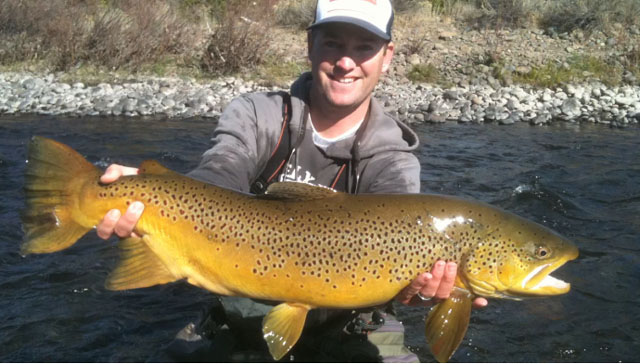In the past when your local lake would hold a weekend tournament, Monday and Tuesday would find more dead fish than normal floating along the shoreline. Through conservationist efforts and anglers who are conscious about the ecosystem, there have been a lot less dead fish at the end of a tournament these days.
That is due to the updated catch and release methods implemented by anglers and tournament holders whom make it part of the rules to have live fish for weigh-in. I remember my Uncle using a stringer when I was a kid.
Unless you plan on keeping the fish you catch, stringers are definitely not recommended for catch and release. And most states have regulations on how many and what size fish you can keep, so check with your local Fish and Wildlife agency for more info on creel limits.
With the arrival of modern bass boat builders and live-well chemicals, it is much easier for the average angler to maintain the condition of their bass until it's time to release them.
One non-ecological benefit of catch and release is that when you catch a fish, it becomes stressed out from the fight it put up and then it gets panicked when you put it back in the water, which in turn scares the other fish. They either run or become very inactive. So if you want to catch more fish in a particular area, you put the fish in your live-well until it's time to move on. That's if you're not competing in a tournament at the time.
Hint: catch and release is another reason why tournament anglers do so well.
Here in America it is our choice to catch and release. In Europe the pollution has destroyed some natural waters and catch and release is expected among sport anglers.
The emphasis among bass anglers today is on quality fishing. We can't take from a resource and not give something back. Catch and release is the perfect opportunity to conserve our resources so our children have fish to catch when they get older. You can't be forced to put a fish back when you have legally caught it within your state's local creel laws. That choice is up to you.
Here are a few tips for catch and release:
* Remember to have your needle nose pliers ready to remove a stubborn hook. If you try to yank and twist it, you might do more damage to the fish. Remember, there is a bard on the sharp end of the hook. This type of situation requires a calm mind and some experience to successfully remove the hook.
* If you have to grab the fish with your hands, always wet them first. Dry skin will remove the protective slime coating on the fish, this can cause the unprotected areas to become susceptible to algae and fungal growth which can cause disease and eventually kill the fish. (Delayed Mortality)
* Try not to use a fishing-net unless it's the plastic coated kind. Once again, the dry netting can remove the fish's protective coating.
* Don't lay the fish on the dock, the deck of your boat or the ground next to the shoreline. Again, the removal of the fish's protective coating causes long-term effects.
* If the fish swallows the hook, don't try to remove it. Just cut the line as close as you can to the hook and put the fish in the water. The fish will usually expel the hook on its own, once it's back in the water.
* The proper use of a live-well is the best method for keeping fish alive until its time to release them. A little research at your local bait and tackle shop will help with choosing the right chemicals and how much to use in your live-well.
* Try to keep the water temperature of your live-well within five degrees of the water temperature of the lake. Five to eight degrees can be fatal. The use of non-chlorinated ice is recommended in small doses.
* And remember to wet the measuring board before putting the fish on it. It's all about that protective coating.
With a little research you can find out more about proper catch and release methods used to conserve fish in our local bodies of water. Anglers that choose to ignore the use of proper catch and release methods, make all anglers look bad. The general public doesn't like to see dead fish clogging up the spillways.
With the focus on delayed mortality heating up, the emphasis is on catch and release fishing. Some say that catch and release fishing is still killing fish because many anglers don't know or don't use proper handling methods.
Delayed mortality is something that happens to a few fish after they're caught. Some fish simply don't survive the shock. But a larger amount have a better chance of survival if anglers are more aware of they're actions.
The general public begins to get less than favorable opinions about tournaments and weekend fishermen when the media receives negative information about 'delayed mortality? from conservationists out to stop tournaments.
This without giving anglers a chance to prove them-selves capable of executing proper catch and release methods is underhanded and unfair to the anglers who do.
As long as there are anglers willing to go a little further in their efforts, there will always be more fish to catch.
As always, keep happy thoughts and good fishing to you.
5 Ways to Increase Cycling Speed

Loft.. yes or no for long patterns?


Copyright © www.mycheapnfljerseys.com Outdoor sports All Rights Reserved